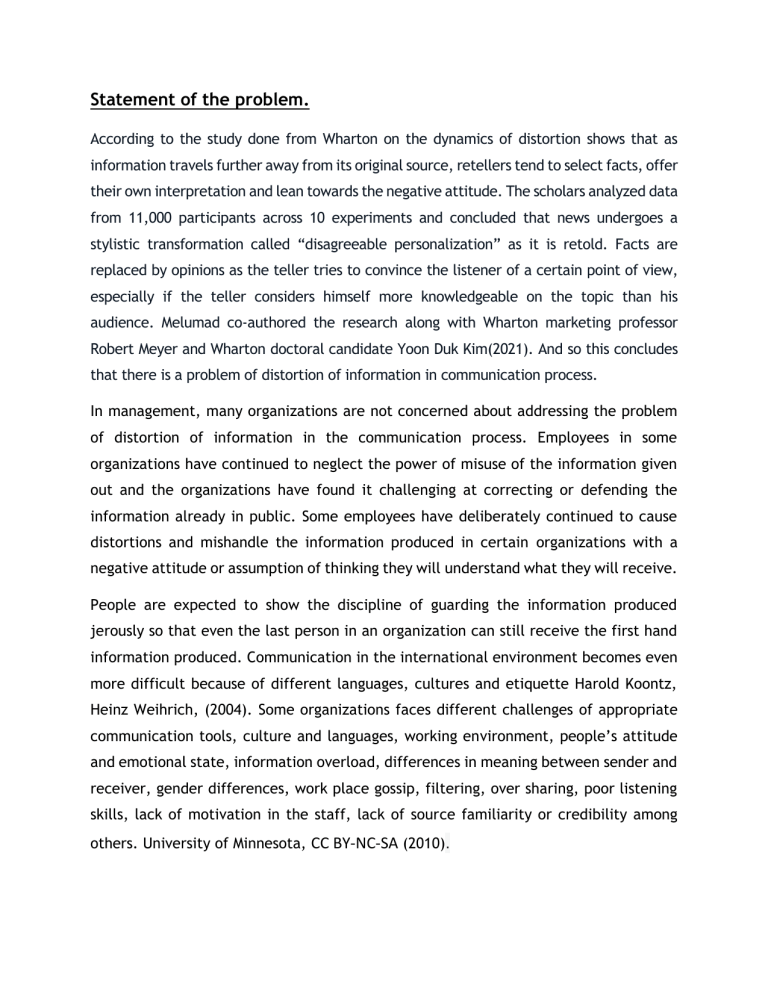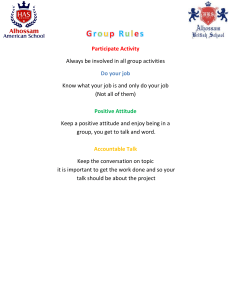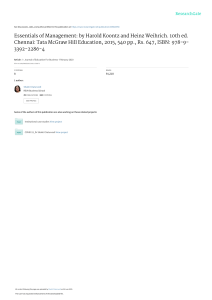
Statement of the problem. According to the study done from Wharton on the dynamics of distortion shows that as information travels further away from its original source, retellers tend to select facts, offer their own interpretation and lean towards the negative attitude. The scholars analyzed data from 11,000 participants across 10 experiments and concluded that news undergoes a stylistic transformation called “disagreeable personalization” as it is retold. Facts are replaced by opinions as the teller tries to convince the listener of a certain point of view, especially if the teller considers himself more knowledgeable on the topic than his audience. Melumad co-authored the research along with Wharton marketing professor Robert Meyer and Wharton doctoral candidate Yoon Duk Kim(2021). And so this concludes that there is a problem of distortion of information in communication process. In management, many organizations are not concerned about addressing the problem of distortion of information in the communication process. Employees in some organizations have continued to neglect the power of misuse of the information given out and the organizations have found it challenging at correcting or defending the information already in public. Some employees have deliberately continued to cause distortions and mishandle the information produced in certain organizations with a negative attitude or assumption of thinking they will understand what they will receive. People are expected to show the discipline of guarding the information produced jerously so that even the last person in an organization can still receive the first hand information produced. Communication in the international environment becomes even more difficult because of different languages, cultures and etiquette Harold Koontz, Heinz Weihrich, (2004). Some organizations faces different challenges of appropriate communication tools, culture and languages, working environment, people’s attitude and emotional state, information overload, differences in meaning between sender and receiver, gender differences, work place gossip, filtering, over sharing, poor listening skills, lack of motivation in the staff, lack of source familiarity or credibility among others. University of Minnesota, CC BY-NC-SA (2010). Although many managers have tried to make effort to deliver the appropriate information to all people in organizations, some organizations have continued to face such challenges due to selfish ambitions of some people within an organization. Therefore this study is to analyze the effect of communication gap in the organization management. Purpose of the study To analyze the effect of communication gaps in organization management. Objectives. 1. To investigate the current status of information flow in an organization 2. To assess the measures put to ensure there is proper information flow in an organization. 3. To analyze the challenges faced by the managers I the protection of information flow in communication. Research questions. 1. What is the status quo of information flow in organization 2. What are the measures put in place to ensure proper information flow 3. What are the challenges facing the organizations in ensuring proper information flow Content scope The study will be limited to analyzing the effect of communication gaps in organizations in Ankole region Geographical scope. The research will be carried out in the region of Ankole covering 11 administrative districts. Literature review. What’s the status quo of information flow in an organization? In today’s enterprise, information must flow faster than ever before. The amount of information produced has greatly increased over the years and frequently causing information overload. It should be taken that what is often needed is not more information but relevant information. According to Harold Koontz and Heinz Weihrich (2004), states that leadership demands information about what is really going on in an organization. It is necessary for managers to determine what kind of information a manager needs to have for effective decision making. Obtaining this information frequently requires getting managers’ superiors and subordinates and also departments and people elsewhere in an organization. Harold and Heinz confirm that the information flow in communication process begins with the sender who encodes an idea that is sent in oral, written, visual and some other form to the receiver. The information may flow not only downward or upward in an organization structure but also horizontally or diagonally. The information flow can be through written form but more information flows orally not forgetting the nonverbal. Harold and Heinz also encourages the MBWA (management by walking around) perspective. This is when the managers do not sit in their offices and wait for the responses from their people within an organization but keep moving around the organization to obtain the information. Managers who never leave the office, and who rely on formal communication channels, may receive only the information that places the subordinates in a favorable light. To overcome their isolation, managers need to supplement the formal with informal channels of communication. In an organization, effective information flows in various directions like downward, upward, and crosswise. For effective communication to happen and benefit the organization, the information should be flowing from the subordinates to the mangers which is called down-up system and this prevents some lost information. The information in an organization flows in different ways like written, oral and nonverbal communication. For any information to move from one body to another there must be a means of transfer and either of the above information flows. But it’s evidenced that in the written means it’s hardly for information to lose its original meaning compared to oral and non-verbal which tend to pick the relevant information and neglect the rest. The message repeatedly through several media, people receiving it will more accurately comprehend and recall it. Harold and Heinz (2004). Concerning the other ways of communication, through written expression, there is of course the possibility to send letters or faxes. But the apparition of the email has revolutionized the Individual level Collective level Tacit knowledge Interpersonal communication system Objective knowledge Organizational routines Direction Interpersonal communication system Leadership Institutional processes Shared experiences Information Internal strategic capabilities. The email has become ubiquitous and has now been commonly adopted by the major part of the companies. It has almost become difficult for a company to communicate without email. B Van den. Hooff, J. Goot and S. de jonge (2005). We can also add the more and more common use of intranet or databases which communicate information to a large amount of people within the company. According the Jason Gordon (2022) Organizational communication involves the relaying of information within the organization from one level to another. Organizations must have a robust environment that encourages and facilitates open communication that, in turn, will lead the employees to accomplish their task effectively. Formal channels of communication involves the flow of communication between the channels of organization. Generally, there is some level of bureaucracy in flow of information. Informal Channels involves social and psychological factors within an informal system. It involves any channel of information that is not formal. The communication process is speedy but has a lot of discrepancy. Communicating effectively with employees can build organizational commitment, achieve superior business outcomes, influence corporate reputation, share knowledge, gain trust, instill a sense of belonging, create awareness and engage employees. Kalla (2005); Yates (2006); A Dortok (2006), Welch and Jackson (2007) and White, Vanc and Stafford (2010) Effective internal communication leads to improved business outcomes and committed employees are more productive. A Watson Wyatt study (Yates, 2006) with 260 US and 75 Canadian companies and among 335 participants discovered that effective communication is a leading indicator of an organization’s financial performance and higher communication effectiveness results in a 19.4% increase in market premium. Such organizations are also 4.5 times more likely to have highly engaged employees. On the other hand, poor internal communication can be detrimental to organizational effectiveness and internal relationships if employees don’t receive information in formats that are useful or acceptable to them (Welch, 2012). The bottom-up flow is very often initiated by the top management. The top-down communication has to be undertaken in a way that employees feel the motivation to imply themselves in the company and adopt a value adding attitude. It is the role of the top management to ensure that the information flow works in both ways. A Dortok (2006). The main objectives of internal communication are informing, carrying out change and motivating. In the matter of pure information, sharing the information is the best way to provoke an answer and to get information on the other hand. There is also here the opportunity to create a company spirit. Concerning changes, developing a bottom-up communication can reduce the reluctance to change. If people are early informed and can thus give feedback because they have the time to give feedback, it can be very beneficial for the business, especially because through a bottom-up flow you get direct information from the field. About motivation, we can say that it is the opportunity to create interaction and exchange between people. And thus it enables to create or to strengthen the communication flow in the both ways. R R Dolphin (2005).



